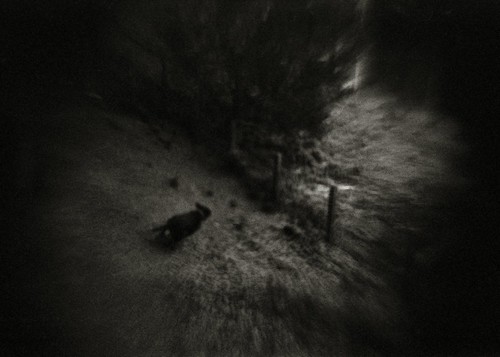Kodak UK Press Release:
Kodak Introduces Enhanced PORTRA Colour Negative Films with Finer Grain, Spectacular Skin Tones, Vivid Colour and Ideal Scanning Performance – Continued Innovation Gives Pro Photographers High Quality Films to Achieve Impactful Images
London, September 11 – In a move that underscores its ongoing support of the professional photography market, Eastman Kodak Company today introduced enhanced versions of its iconic KODAK PROFESSIONAL PORTRA colour negative film family, comprising 160 VC, 160 NC, 400 VC and 400 NC film. These films help professional photographers create stunning images with finer grain, spectacular skin tones, and improved scanning performance for greater enlargement capability. Plus, PORTRA 160VC and PORTRA 400VC films now provide a more ideal combination of higher colour saturation and lower contrast for optimal performance in high-colour applications.
"More than two-thirds of professional photographers today mix film and digital when shooting, depending on the job at hand and the desired end result they want to achieve," said Julian Baust UK Country Manager "Our commitment is to make sure they have the best tools for the job. The innovations we are introducing in our new PORTRA films help ensure that photographers, whether shooting at a wedding, in the studio, on a fashion shoot, or for nature and landscapes, achieve the most truthful, impactful result."
Features of the new PORTRA Film include:
- Finer Grain: New Micro-Structure Optimized T-GRAIN® Emulsions now enable PORTRA Films to deliver finer grain than ever before.
- Outstanding Scanning Results: With finer grain and an emulsion overcoat specially designed for scanners, PORTRA Films reproduce beautifully, be it optical or digital output.
- Spectacular Skin Tones: Reengineered PORTRA Films deliver smooth, natural reproduction of skin tones, with a choice of Natural or Vivid colour saturation.
- Superb Colour in Mixed Light: PORTRA films deliver beautiful, natural colour regardless of the lighting conditions, even under fluorescent light.
- Best In Class Underexposure Latitude: PORTRA films provide the greatest latitude among professional colour films (-2 to+3 stops), enabling photographers to shoot with confidence even under challenging lighting conditions.
- True-To-Speed ISO Ratings: There‘s no need to test or compensate. Set the meter to the box speed and start shooting.
- Matched Prints: Single Channel Printing Technology delivers beautifully matched prints across all speeds and formats.
To ensure that this new film would meet the needs of professionals, Kodak had a number of photographers and professional labs test the product during its final stages of development.
"I am thrilled with this new film," said Jock McDonald, an internationally acclaimed professional photographer, based in San Francisco, California. "It brings so much to the dance – the way it handles contrast, keeping shadow detail is incredible. And its fine grain detail and colour palate are wonderful. It’s magical."
"Due to the superior grain and latitude of the new PORTRA films, I am able to use available light in more extreme situations without compromising the quality my clients and I demand," said Chris Usher, a renowned internationally published photojournalist whose documentation of behind the scenes moments at the White House, "Behind the Velvet Rope," is currently touring as an exhibition. "Whether shooting at a small county fair in the middle of the day, a rodeo at night, the majestic splendor of Niagara Falls through the mist or everyday people going about their lives, I can rely on PORTRA Film with confidence. The images, in detail and colour, are the next best thing to being there."
McDonald and Usher will join professional photographers Renate Forster and Frederic Lagrange at a panel at Photokina, to discuss their experiences with PORTRA Film, as well as how film fits into their work and photography. Photokina is the largest imaging exposition and trade show in Europe, which opens September 26 in Cologne, Germany. Visitors to Photokina can join these panels, to be held:
- Wednesday, September 27: 10:00 – 11:30 a.m. and 2:00 – 3:30 p.m.; Kristallsaal room, section 3: Entrance West, 3rd floor
- Thursday, September 28: 10:00 – 11:30 a.m.; Salon Barcarole: Entrance West, 3rd floor
In addition to the discussion, Kodak will showcase images that these photographers have captured using the PORTRA films at its booth, 5.2 – Stand A002 / C031 and during the panel presentations.
The new KODAK PROFESSIONAL PORTRA films will be available worldwide on a stock-turnover basis beginning in the fourth quarter of 2006.
About Eastman Kodak Company
Kodak is the world’s foremost imaging innovator, providing leading products and services to the photographic, graphic communications and healthcare markets. With sales of $14.3 billion in 2005, the company is committed to a digitally oriented growth strategy focused on helping people better use meaningful images and information in their life and work. Consumers use Kodak’s system of digital and traditional image capture products and services to take, print and share their pictures anytime, anywhere; businesses effectively communicate with customers worldwide using Kodak solutions for prepress, conventional and digital printing and document imaging; creative professionals rely on Kodak technology to uniquely tell their story through moving or still images; and leading healthcare organizations rely on Kodak’s innovative products, services and customized workflow solutions to help improve patient care and maximize efficiency and information sharing within and across their enterprise. More information about Kodak (NYSE: EK) is available at www.kodak.co.uk.Kodak, Kodak Professional and Portra are trademarks of Eastman Kodak Company.
